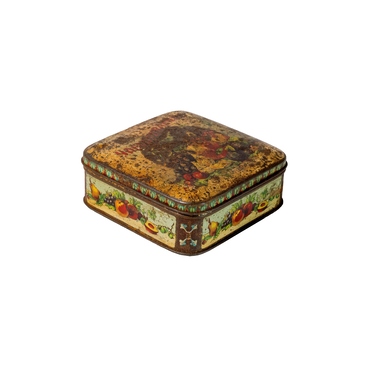The term “kornevatik” (“root basket”) was used to call a woven container made in the form of a basket with a lid. Such vessels were popular among the northern Khanty and Mansi, who used them to keep food, ritual items, and arrowheads. The northerners took small kornevatiks with them while traveling and used large ones to store deerskins, clothes, dishes, and other things.
The so-called sarga (thin bands of a cedar root) had to be prepared to weave such baskets. The locals dug the root out of the ground with a dull ax, split it with a knife into several layers, and flattened it. Such bands could be used either immediately or later. If used later, they were rolled into rings and dried to store them. Dry sarga could be stored for several years. After soaking in water, it became as elastic and durable as the fresh one.
The base of the kornevatiks were woven of bird cherry twigs. Traditionally, it was men’s craft, because it required great physical strength. The carcass was woven with sarga. Each new wrap was dragged through a slot, which was made with an awl in the previous wrap. After that, the weaving was evenly tightened. It did not let sarga sag and did not let the base deform. The lid of the basket was made separately in the same technique. Then it was attached to the kornevatik with rawhide bands. The handle for carrying a container was also made of rawhide. The finished kornevatik was left to dry for a while. Sarga shrank a bit, and the weaving became tighter.
The cedar roots repelled water. That is why the things left in the basket did not become wet. The lid was done in such a way, as to avoid any gaps. Moreover, such a container was light and solid, it was taken for a journey and easily carried from one place to another.
The indigenous inhabitants of Siberia were not the only ones, who used kornevatiks. The Russian peasants, who moved to these regions from central Russia, gradually adopted them. However, by the beginning of the 20th century, such containers became less common. Now old baskets made of sarga could be seen in the museum collections. The modern craftsmen weave them as souvenirs.
The so-called sarga (thin bands of a cedar root) had to be prepared to weave such baskets. The locals dug the root out of the ground with a dull ax, split it with a knife into several layers, and flattened it. Such bands could be used either immediately or later. If used later, they were rolled into rings and dried to store them. Dry sarga could be stored for several years. After soaking in water, it became as elastic and durable as the fresh one.
The base of the kornevatiks were woven of bird cherry twigs. Traditionally, it was men’s craft, because it required great physical strength. The carcass was woven with sarga. Each new wrap was dragged through a slot, which was made with an awl in the previous wrap. After that, the weaving was evenly tightened. It did not let sarga sag and did not let the base deform. The lid of the basket was made separately in the same technique. Then it was attached to the kornevatik with rawhide bands. The handle for carrying a container was also made of rawhide. The finished kornevatik was left to dry for a while. Sarga shrank a bit, and the weaving became tighter.
The cedar roots repelled water. That is why the things left in the basket did not become wet. The lid was done in such a way, as to avoid any gaps. Moreover, such a container was light and solid, it was taken for a journey and easily carried from one place to another.
The indigenous inhabitants of Siberia were not the only ones, who used kornevatiks. The Russian peasants, who moved to these regions from central Russia, gradually adopted them. However, by the beginning of the 20th century, such containers became less common. Now old baskets made of sarga could be seen in the museum collections. The modern craftsmen weave them as souvenirs.



